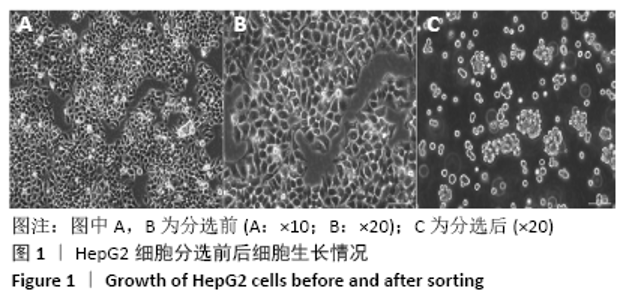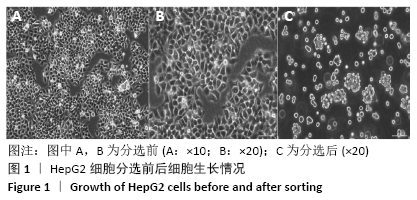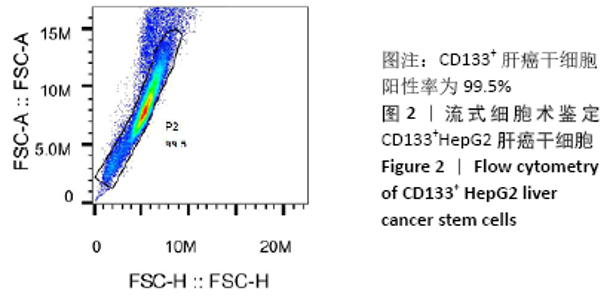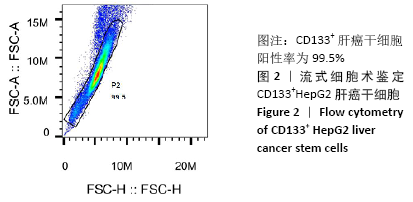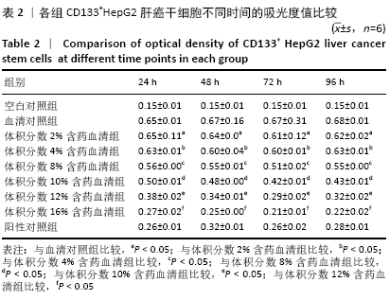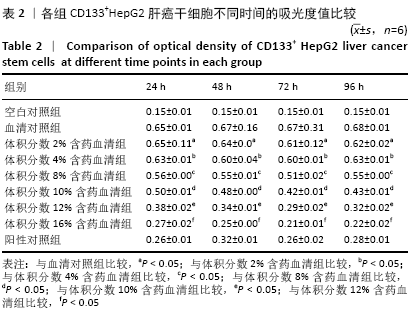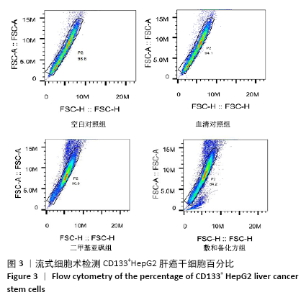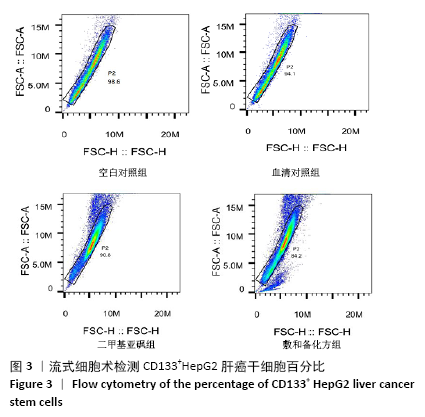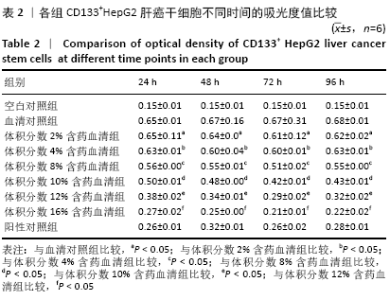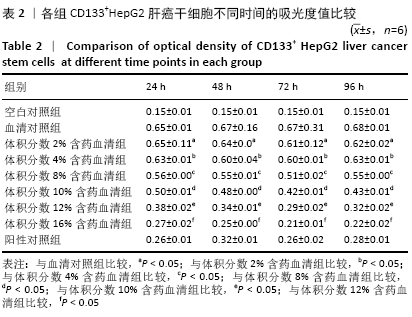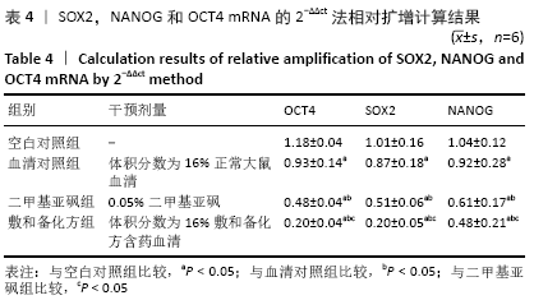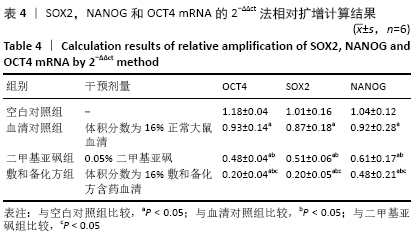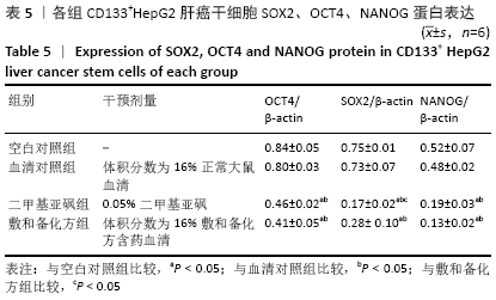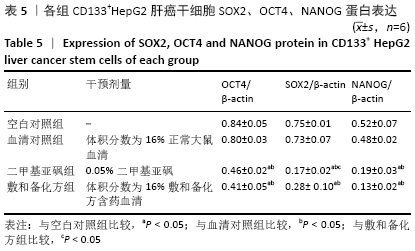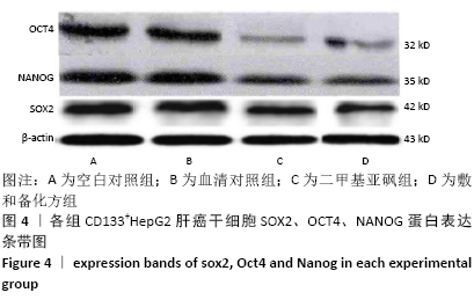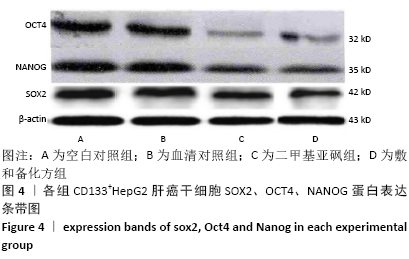[1] BRAY F, FERLAY J, SOERJOMATARAM I, et al. Global cancer statistics 2018: GLOBOCAN estimates of incidence and mortality worldwide for 36 cancers in 185 countries. CA Cancer J Clin. 2018;68(6):394-424.
[2] 王宁,刘硕,杨雷,等.2018全球癌症统计报告解读[J].肿瘤综合治疗电子杂志,2019,5(1):87-97.
[3] MALATO Y, NAQVI S, SCHÜRMANN N, et al. Fate tracing of mature hepatocytes in mouse liver homeostasis and regeneration. J Clin Invest. 2011;121(12):4850-4860.
[4] YOVCHEV MI, GROZDANOV PN, JOSEPH B, et al. Novel hepatic progenitor cell surface markers in the adult rat liver. Hepatology. 2007; 45(1):139-149.
[5] GOURNAY J, AUVIGNE I, PICHARD V, et al. In vivo cell lineage analysis during chemical hepatocarcinogenesis in rats using retroviral-mediated gene transfer: evidence for dedifferentiation of mature hepatocytes. Lab Invest. 2002;82(6):781-788.
[6] HO JW, PANG RW, LAU C, et al. Significance of circulating endothelial progenitor cells in hepatocellular carcinoma. Hepatology. 2006;44(4): 836-843.
[7] 莫春梅,荣震,胡振斌,等.敷和备化方治疗原发性肝癌介入术后综合征40例[J].南京中医药大学学报,2013,29(1):16-18.
[8] 郭子健,荣震,莫春梅,等.敷和备化方治疗原发性肝癌介入术后综合征临床研究[J].实用中医药杂志, 2018,34(5):520-521.
[9] 陈小云.敷和备化方对原发性肝癌化疗栓塞术后T淋巴细胞亚群及NK细胞的影响[D].南宁:广西中医药大学,2016.
[10] 陈亚栋.敷和备化方联合TACE 治疗肝郁脾虚型原发性肝癌的临床观察[D].南宁:广西中医药大学,2019.
[11] 莫春梅,荣震,余娜,等.敷和备化方防治原发性肝癌介入术后肝纤维化40例临床观察[J].湖南中医杂志,2015,31(2):5-7,25.
[12] 胡礼仪,侯永彬,余莉华,等.白芍总苷对肝癌耐药细胞BEL-7402/ADM耐药性的逆转作用及机制探讨[J].山东医药,2017,57(10):1-4.
[13] 国锦,高燕,赵渤年.中药复方血清药理学研究方法进展[J].中华中医药杂志,2017,32(4):1656-1658.
[14] MACKILLOP WJ, CIAMPI A, TILL JE, et al. A stem cell model of human tumor growth: implications for tumor cell clonogenic assays. J Natl Cancer Inst. 1983;70(1):9-16.
[15] MA S, CHAN KW, HU L, et al. Identification and characterization of tumorigenic liver cancer stem/progenitor cells. Gastroenterology. 2007;132(7):2542-2556.
[16] 章健,来维洁,周秀梅,等.靶向肝癌干细胞的肿瘤治疗进展[J].中国细胞生物学学报, 2017,39(1):87-96.
[17] WANG P, CONG M, LIU TH, et al. Primary isolated hepatic oval cells maintain progenitor cell phenotypes after two-year prolonged cultivation. J Hepatol. 2010;53(5):863-871.
[18] 朱新锋. 全反式维甲酸诱导分化肝癌干细胞作用研究[D].昆明:昆明医科大学,2016.
[19] NOVAK D, HÜSER L, ELTON JJ, et al. SOX2 in development and cancer biology. Semin Cancer Biol. 2019;11:30185-30188.
[20] STREBINGER D.SOX2和OCT4浓度的波动或会影响胚胎干细胞的分化命运[J].生物医学工程与临床,2019,23(6):705.
[21] VAIDYA M, SUGAYA K. Differential sequences and single nucleotide polymorphism of exosomal SOX2 DNA in cancer. PLoS One. 2020;15(2): e0229309.
[22] LI Y, DU M, WANG S, et al. Clinicopathological Implication of Long Non-Coding RNAs SOX2 Overlapping Transcript and Its Potential Target Gene Network in Various Cancers. Front Genet. 2020;10:1375.
[23] CHEN B, ZHU Z, LI L, et al. Effect of overexpression of Oct4 and Sox2 genes on the biological and oncological characteristics of gastric cancer cells. Onco Targets Ther. 2019;12:4667-4682.
[24] 叶伟康,张演,方冠,等.mir-638和Sox2在原发性肝癌中的表达及临床意义[J].肝胆胰外科杂志, 2017,29(6):477-481.
[25] CAO J, ZHAO M, LIU J, et al. RACK1 Promotes Self-Renewal and Chemoresistance of Cancer Stem Cells in Human Hepatocellular Carcinoma through Stabilizing Nanog. Theranostics. 2019;9(3):811-828.
[26] LIANG C, ZHANG K, GE H, et al. Prognostic and clinicopathological value of Nanog in hepatocellular carcinoma: A meta-analysis. Clin Chim Acta. 2018;477:24-31.
[27] TANAKA M, MIYAJIMA A. Oncostatin M, a multifunctional cytokine. Rev Physiol Biochem Pharmacol. 2003;149:39-52.
[28] 曾小莉,涂植光.人参皂甙 Rh2 对人肝癌细胞SMMC-7721的诱导分化作用[J].癌症,2004,23(8):879-884.
[29] 任志俭.苦参碱通过 mTOR 信号通路诱导人肝癌 HepG2 细胞发生自噬现象[D].兰州:兰州大学, 2011.
[30] 吴洪斌.白花蛇舌草含药血清对 SMMC-7721 人肝癌细胞的生长和分化的影响及机制研究[D].武汉:湖北中医学院, 2008.
[31] 肖志伟,陈汉锐,林丽珠.林丽珠论肝癌的分阶段治疗策略[J].中华中医药杂志, 2019,34(6):2526-2528.
|
